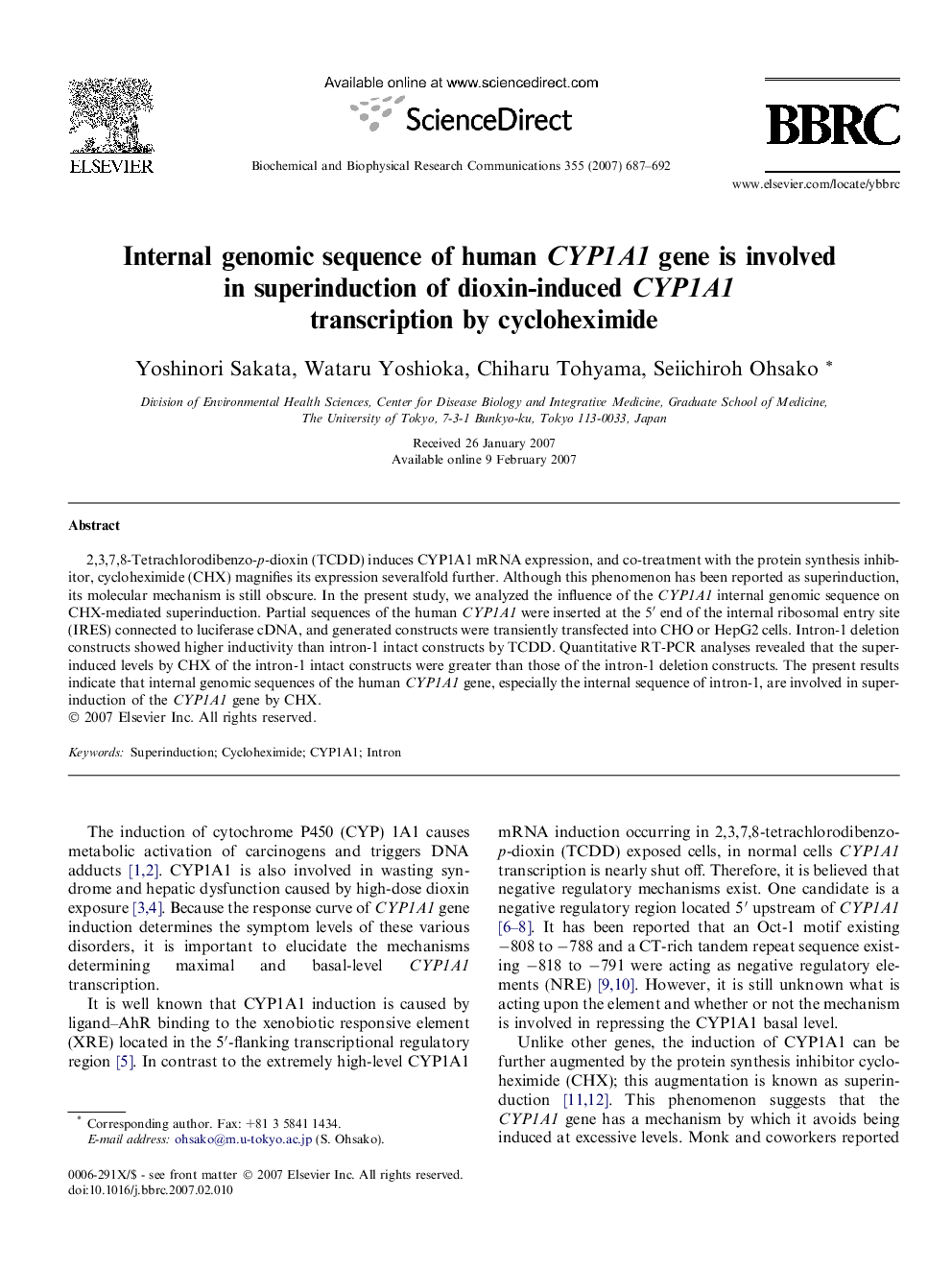| Article ID | Journal | Published Year | Pages | File Type |
|---|---|---|---|---|
| 1938883 | Biochemical and Biophysical Research Communications | 2007 | 6 Pages |
2,3,7,8-Tetrachlorodibenzo-p-dioxin (TCDD) induces CYP1A1 mRNA expression, and co-treatment with the protein synthesis inhibitor, cycloheximide (CHX) magnifies its expression severalfold further. Although this phenomenon has been reported as superinduction, its molecular mechanism is still obscure. In the present study, we analyzed the influence of the CYP1A1 internal genomic sequence on CHX-mediated superinduction. Partial sequences of the human CYP1A1 were inserted at the 5′ end of the internal ribosomal entry site (IRES) connected to luciferase cDNA, and generated constructs were transiently transfected into CHO or HepG2 cells. Intron-1 deletion constructs showed higher inductivity than intron-1 intact constructs by TCDD. Quantitative RT-PCR analyses revealed that the superinduced levels by CHX of the intron-1 intact constructs were greater than those of the intron-1 deletion constructs. The present results indicate that internal genomic sequences of the human CYP1A1 gene, especially the internal sequence of intron-1, are involved in superinduction of the CYP1A1 gene by CHX.
